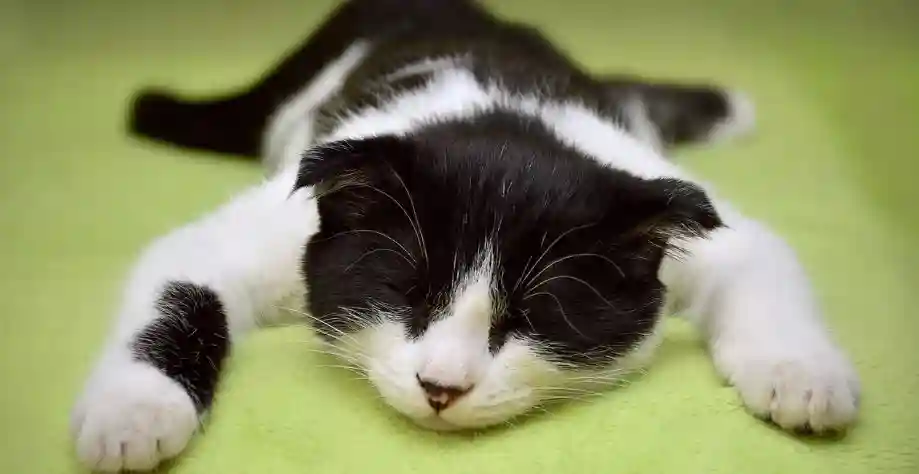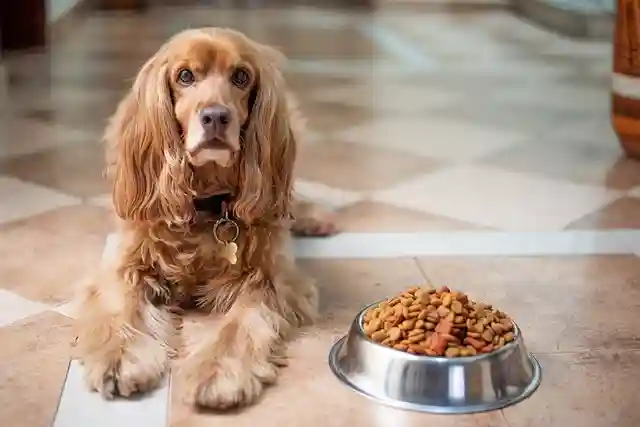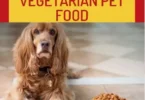If you’re a pet owner, you know how concerning it can be when your furry friend suddenly loses their appetite. It’s a common issue that can arise for a variety of reasons, and addressing it promptly is essential for your pet’s health and well-being. In this comprehensive article, we’ll walk you through the potential causes of your pet’s decreased appetite and provide valuable insights on what you can do to help them get back on track to good health. We will find a solution for Pets not eating. Let’s dive in.
Understanding the Reasons for Pet’s Reduced Appetite

Illness or Underlying Health Issues: One of the most common reasons for a pet not eating is an underlying health problem. Just like humans, pets can experience a range of illnesses that affect their appetite. These could include gastrointestinal issues, dental problems, infections, or even more severe conditions like cancer. If you notice a sudden change in your pet’s eating habits, it’s essential to consult your veterinarian promptly.
What Should I Do If My Pets Not Eating?
Stress and Anxiety
Believe it or not, pets can experience stress and anxiety just like humans. Significant changes in their environment, such as moving to a new home, the addition of a new pet to the household, or even loud noises like thunderstorms or fireworks, can trigger stress in your furry friend. This stress can lead to decreased appetite. To help your pet, try to identify and alleviate the source of their anxiety.
Recent Vaccinations or Medications
Some pets may experience side effects from vaccinations or medications, including a temporary loss of appetite. If your pet has recently received vaccinations or started a new drug, consult your vet to see if this could be the cause. They may recommend adjusting the dosage or providing alternative treatments if necessary.
Understanding the Link Between Pets Not Eating and Dental Problems

Dental issues can be a significant factor in a pet’s reluctance to eat. Painful gums, broken teeth, or untreated dental diseases can make chewing uncomfortable. Regular dental check-ups and cleanings are essential to ensure your pet’s oral health and prevent appetite issues related to dental problems.
Pet Eating Habits: Reasons for Appetite Changes
Sometimes, your pet’s picky eating habits might be a matter of preference. They may have developed a taste for a particular food or treat and are holding out for their favorite. While indulging them occasionally is fine, it’s essential to maintain a balanced diet to meet their nutritional needs.
Steps to Encourage Your Pet to Eat

Now that we’ve explored some common reasons for a pet’s decreased appetite let’s discuss steps you can take to help your furry companion regain their interest in food.
Consult Your Veterinarian
If your pet’s appetite loss is persistent or accompanied by other concerning symptoms, consult your veterinarian immediately. They can perform a thorough examination and run necessary tests to diagnose any underlying health issues. Early detection and treatment are crucial for your pet’s well-being.
Offer a Variety of Foods
Pets can get bored with the same food day after day. Consider rotating their diet with different flavors and textures of high-quality pet food. Be sure to consult your vet for guidance on the best options for your pet’s specific dietary needs.
- Change in Flavors and Textures: Experiment with different flavors and textures of pet food. Dogs and cats, like humans, can become bored with the same food every day. Providing variety can pique their interest.
- Rotating Protein Sources: If your pet eats meat-based food, try rotating protein sources. For example, switch between chicken, beef, and fish. Each protein offers unique flavors and nutritional benefits.
- Homemade Meals: Consider preparing homemade meals for your pet under the guidance of a veterinarian. Homemade diets can be tailored to your pet’s preferences and nutritional requirements.
- Adding Toppers: Add toppers like a small amount of low-sodium chicken broth or canned food to your pet’s kibble. These additions can enhance the aroma and flavor of the food, making it more appealing.
- Special Occasion Treats: Occasionally, offer special treats like small pieces of cooked chicken or carrot slices. Reserve these treats for times when your pet needs extra encouragement to eat.
- Wet vs. Dry Food: If your pet typically eats dry kibble, try offering wet food. Some pets prefer the moisture content and flavor of wet food.
- Consult Your Veterinarian: Before making significant changes to your pet’s diet, consult your veterinarian. They can provide recommendations based on your pet’s specific dietary needs, allergies, or sensitivities.
- Avoid Overfeeding: While variety is essential, ensure you maintain portion control to prevent overfeeding, which can lead to weight issues. Follow feeding guidelines provided by your pet food manufacturer or vet.
- Monitor Allergies: Be cautious when introducing new foods to watch for any allergic reactions or digestive issues in your pet. If you notice adverse reactions, discontinue the new food immediately.
- Gradual Transitions: When switching between different foods or flavors, do so gradually. Gradual transitions help prevent gastrointestinal upset and ensure a smooth adjustment.
- Food Safety: Ensure that any homemade or fresh food you provide to your pet is safe for them to eat. Avoid feeding pets foods that are toxic to them, such as chocolate, grapes, or onions.
Offering a variety of foods can be an effective strategy to entice your pet to eat, but it’s essential to do so with care, considering your pet’s specific dietary needs and preferences. Consulting with a veterinarian for guidance on the best options for your pet is always a wise choice.
Ensure a Calm and Comfortable Environment

Reducing stress in your pet’s environment is essential. Create a calm and safe space for them, free from disturbances. Provide their favorite toys, blankets, or bedding to make them feel secure and relaxed.
- Minimize Noise and Disturbances: Create a quiet space for your pet during meal times. Reduce loud noises, such as TV volume or music, to prevent distractions and anxiety during meals.
- Routine and Consistency: Establish a consistent feeding schedule. Pets thrive on routine, and knowing when to expect their meals can make them feel more secure.
- Separate Feeding Area: Designate a specific area for your pet to eat, away from high-traffic areas and other pets. This provides a sense of privacy and reduces competition for food.
- Comfortable Seating: Ensure your pet has a comfortable and clean place to eat. Provide a clean bowl and consider using elevated bowls for pets with certain medical conditions or joint problems.
- Temperature Considerations: Be mindful of the room temperature. Extreme heat or cold can make your pet uncomfortable and affect their appetite. Keep their dining area at a comfortable temperature.
- Positive Association: Create positive associations with mealtime. Use a consistent command or phrase when it’s time to eat, and offer praise and affection when your pet approaches their food.
- Remove Stressors: Identify and remove stressors from the environment. These may include other aggressive pets, loud appliances, or anything that causes anxiety for your pet.
- Safety and Security: Ensure your pet feels safe during meals. Some pets may be wary of eating if they feel exposed or vulnerable. Providing a sense of security can encourage them to eat.
- Monitor Their Behavior: Pay attention to your pet’s body language during meal times. Look for signs of distress or discomfort, such as pacing, panting, or avoidance of the food bowl.
- Avoid Rushed Meals: Don’t rush your pet during meals. Allow them time to eat at their own pace. Avoid hovering or pressuring them to eat quickly.
- Clean Environment: Keep your pet’s eating area clean and free from odors. Pets have sensitive noses, and a clean environment can make mealtime more inviting.
- Consult Your Vet: If your pet continues to refuse food despite a calm and comfortable environment, consult your veterinarian. There may be underlying health issues contributing to their lack of appetite.
Creating a calm and comfortable mealtime environment is essential for encouraging your pet to eat regularly and with ease. It helps reduce stress, anxiety, and distractions, making mealtime a more enjoyable and nourishing experience for your beloved pet.
Maintain a Regular Feeding Schedule

Establishing a consistent feeding routine can help your pet anticipate mealtimes. Avoid free-feeding, as it can lead to picky eating habits. Feeding at the same time each day can encourage your pet to eat when food is offered.
- Consistency is Key: A regular feeding schedule means feeding your pet at the same times each day. This consistency helps regulate their internal clock and creates a sense of security.
- Predictability: Pets thrive on routine. They come to expect their meals at specific times, reducing anxiety and uncertainty around food.
- Balanced Nutrition: Scheduled feeding allows you to monitor your pet’s food intake, ensuring they receive the right amount of balanced nutrition for their size and activity level.
- Prevents Overeating: Scheduled meals help prevent overeating or obesity. It’s easier to control portion sizes and monitor your pet’s weight when you have set meal times.
- Regular Bathroom Breaks: Scheduled feeding also means scheduled bathroom breaks. This can aid in-house training for puppies and help prevent accidents in the house.
- Consistent Energy Levels: Pets have consistent energy levels throughout the day when they are fed at regular intervals. This can lead to more predictable play and rest patterns.
- Medication Administration: If your pet requires medication, a regular feeding schedule makes it easier to incorporate medication into their routine, ensuring they receive it on time.
- Better Digestion: Scheduled meals can improve digestion. Pets’ bodies become accustomed to processing food at certain times, which can reduce digestive upset.
- Prevents Food Anxiety: Knowing when food will be available reduces food-related anxiety in pets. This is especially helpful for pets who may have experienced food scarcity in the past.
- Positive Association: Scheduled feeding can create a positive association with meal times. Pets come to anticipate and look forward to their meals.
- Easier Training: If you’re training your pet, scheduled meals provide specific times to reinforce desired behaviors with treats or praise.
- Monitoring Appetite: A regular schedule makes it easier to monitor your pet’s appetite. If they suddenly refuse a meal, it can be a sign of an underlying issue that you can address promptly.
- Consult Your Vet: Always consult your veterinarian for guidance on the appropriate feeding schedule for your pet’s age, breed, and specific health needs.
Maintaining a regular feeding schedule is not only convenient for pet owners but also beneficial for your pet’s overall well-being. It provides structure, prevents overeating, and supports healthy digestion and behavior.
Warm Up the Food
Some pets prefer their food slightly warmed. Try microwaving their meal for a few seconds (be sure it’s not too hot) or adding warm water to their kibble to enhance the aroma and flavor.
- Enhanced Aroma: Warming the food slightly can enhance its aroma, making it more appealing to your pet. The smell of warm food often entices pets.
- Increased Palatability: Warm food can be more palatable, as it brings out the flavors and textures of the food. This can encourage your pet to eat more eagerly.
- Easier to Chew: For pets with dental issues or older pets, warm food can be easier to chew and swallow. It can provide added comfort during meals.
- Mimics Prey Temperature: In the wild, prey is often at body temperature when consumed. Warm food may better mimic this natural temperature, making it more attractive to your pet’s instincts.
- Use Caution: When warming pet food, avoid making it too hot. Aim for a slightly warmer than room temperature. Test it with your finger to ensure it’s not too hot for your pet’s mouth.
- Consult Your Vet: If your pet has specific dietary requirements or is on a special diet, consult your veterinarian before warming their food. Some foods may lose nutrients or become less suitable when heated.
Warming your pet’s food can be a simple but effective way to encourage them to eat, especially if they’ve been experiencing a loss of appetite. However, always ensure that the food is at a safe temperature for your pet to consume, and consult your vet for any specific dietary concerns.
Hand-feeding and Positive Reinforcement
For pets with severe appetite issues, consider hand-feeding to make mealtime more appealing. Additionally, praise and reward your pet when they eat, providing positive reinforcement to encourage healthy eating habits.
- Bonding and Trust: Hand-feeding establishes a strong bond of trust between you and your pet. It allows them to associate you with something positive – food!
- Slow Transition: If your pet is wary of their food, hand-feeding provides a gentle transition. Begin by offering small amounts of food from your hand before gradually moving to their bowl.
- Positive Association: Offering food by hand creates a positive association with you, the provider of nourishment. Your pet is more likely to view mealtime as a pleasant experience.
- Monitoring Appetite: Hand-feeding allows you to closely monitor your pet’s appetite. You can gauge how much they eat and identify any changes or issues promptly.
- Building Confidence: For timid or anxious pets, hand-feeding can boost their confidence. It reduces the stress associated with eating and allows them to eat at their own pace.
- Training Opportunities: Hand-feeding provides opportunities for training. You can ask for simple commands like “sit” or “stay” before offering a bite of food as a reward.
- Positive Reinforcement: Positive reinforcement involves rewarding desired behaviors with treats or praise. Use this technique when your pet shows interest in their food or takes a bite.
- Gradual Transition: If your pet has been refusing food, use positive reinforcement to reward them for eating even small amounts. Gradually increase the criteria for rewards as they start eating more.
- Be Patient: Be patient and consistent with positive reinforcement. Over time, your pet will associate eating with positive experiences, making them more likely to eat willingly.
- Variety of Treats: Use a variety of treats for positive reinforcement. Find out what your pet loves most and reserve these special treats for mealtime encouragement.
- Consult a Professional: If you’re having difficulty with your pet’s eating behavior or training, consider consulting a professional animal behaviorist or trainer for guidance.
Hand-feeding and positive reinforcement can transform mealtime into a positive, enjoyable experience for your pet. They are particularly valuable when dealing with pets that have appetite issues, are picky eaters, or require behavioral training. Remember to use these techniques consistently and patiently to achieve the best results.
Prescription Pets Diets and Supplements

In some cases, your vet may recommend prescription diets or supplements to address specific health concerns. These tailored nutrition plans can help manage underlying conditions and improve your pet’s appetite.
- Tailored Nutrition: Prescription diets are formulated to meet the unique nutritional requirements of pets with specific health conditions. They can help manage various issues, from allergies to kidney disease.
- Vet Guidance: Veterinarians typically recommend prescription diets after diagnosing your pet’s condition. They provide precise dietary solutions based on your pet’s health history and needs.
- Digestive Health: Some pets may have digestive disorders that require specialized diets. Prescription diets can support their digestive system and improve nutrient absorption.
- Weight Management: Prescription diets are available for weight management, helping overweight pets shed pounds or maintain a healthy weight through controlled calorie intake.
- Joint Health: Supplements like glucosamine and chondroitin are often recommended for pets with joint issues. They can alleviate pain, reduce inflammation, and improve mobility.
- Skin and Coat: Omega-3 fatty acid supplements can enhance skin and coat health. They are particularly beneficial for pets with skin allergies or conditions.
- Age-Related Support: Senior pets may benefit from prescription diets designed to address age-related issues, such as joint stiffness, cognitive decline, or kidney function.
- Urinary Health: Certain prescription diets can help prevent urinary tract issues by altering the pH of urine or dissolving specific types of crystals.
- Heart Health: Prescription diets for heart conditions are formulated to reduce sodium intake and support cardiovascular function.
- Monitoring Progress: Prescription diets and supplements are often part of a treatment plan. Regular follow-up with your veterinarian is essential to monitor progress and make adjustments as needed.
- Strict Quality Control: Prescription diets are subject to rigorous quality control standards. They undergo testing to ensure they meet specific nutritional requirements.
- Consult Your Vet: Never start a prescription diet or supplement without consulting your veterinarian. They will determine the most appropriate options for your pet’s health condition and monitor their progress.
Prescription diets and supplements are valuable tools for managing your pet’s health and addressing specific dietary needs. When used under the guidance of a veterinarian, they can contribute to improved well-being and quality of life for your furry companion.
Conclusion
Pets not eating can be a cause for concern, but with patience and the right approach, you can help your furry friends regain their appetite and overall health. Remember to consult your veterinarian for professional guidance and tailored solutions to address your pet’s specific needs. By understanding the potential reasons behind your pet’s decreased appetite and taking proactive steps, you can ensure a happy and healthy life for your beloved companion.
Frequently Asked Questions (FAQs)
What are the common reasons for my pet not eating?
Various factors can cause a pet to stop eating, including medical issues, stress, changes in routine, or dietary preferences.
Can stress affect my pet’s appetite?
Yes, stress and anxiety can lead to a loss of appetite in pets. Significant changes in their environment, separation anxiety, or loud noises can trigger stress-related eating problems.
What can I do to encourage my pet to eat when they’re stressed?
Creating a calm and comfortable environment, maintaining a consistent routine, and offering their favorite foods or treats can help reduce stress and improve their appetite.
Is it okay to hand-feed my pet if they won’t eat on their own?
Yes, hand-feeding can be a helpful technique to encourage eating, especially for pets experiencing appetite issues. It can create a positive association with food.
Should I be worried if my pet is a picky eater?
Some pets are naturally picky, but it’s essential to ensure they still receive a balanced diet. Consult your vet for guidance on the best approach to meet their nutritional needs.
Can a change in pet food brands lead to appetite problems?
Yes, a sudden change in pet food brands or types can result in a refusal to eat. Gradually transitioning to a new food is recommended to avoid this issue.
What role does dental health play in a pet’s eating habits?
Dental problems, such as gum disease or toothaches, can make eating painful. Regular dental check-ups and dental care are vital to ensure your pet’s comfort during meals.
How can I tell if my pet is drinking enough water?
Monitor your pet’s water bowl to ensure they are drinking regularly. Dehydration can worsen appetite issues, so maintaining proper hydration is essential.
What should I do if my pet has recently had surgery and won’t eat?
Post-surgery appetite loss is common. Follow your vet’s post-operative care instructions, and if the issue persists, consult them for further guidance.
Can my pet’s age affect their eating habits?
Yes, age-related factors can impact appetite. Senior pets may have different dietary needs and may require special diets. Consult your veterinarian for appropriate recommendations.
When is it necessary to seek professional veterinary help for a pet not eating?
If your pet’s appetite loss is prolonged, severe, or accompanied by other concerning symptoms, such as vomiting or lethargy, consult your veterinarian promptly. Timely intervention is crucial for their well-being.







Leave a Comment
You must be logged in to post a comment.